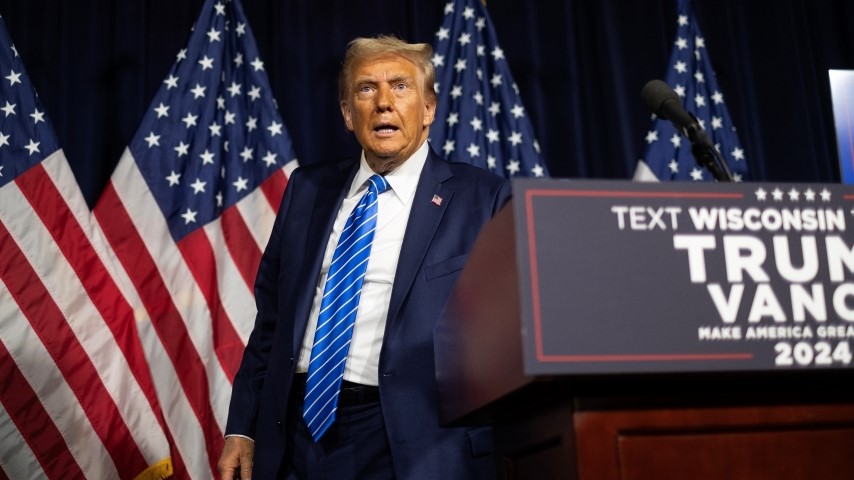Trump’s First Tariffs Backfired. His New Ones Would Be Far Worse.
Photo by Jim Vondruska/Getty Images
Former President Donald Trump loves tariffs. These taxes, levied on imported or exported goods, really get him going.
“I am a Tariff Man,” he tweeted in December 2018. “When people or countries come in to raid the great wealth of our nation, I want them to pay for the privilege of doing so. It will always be the best way to max out our economic power.”
True to his chosen moniker, Trump in 2018 and 2019 imposed sweeping tariffs, the likes of which hadn’t been seen for decades. In February 2018, he enacted duties of 30 percent against imports of washing machines and solar panels. Tariffs of 25 percent on steel imports and 10 percent on aluminum imports followed a month later. Trump then directed America’s tax collectors to take 25 percent on 818 categories of goods imported from China worth $50 billion. After the Chinese retaliated with tax hikes on American goods, he expanded the tariffs to cover a further $200 billion of Chinese goods in September 2019.
Five years later, Trump boasts that his tariffs spurred American manufacturing and brought back jobs. A recently published economic analysis suggests otherwise.
Justin Pierce and Aaron Flaaen, economists focusing on international trade at the Federal Reserve Board of Governors, found that Trump’s tariffs reduced U.S. manufacturing employment and increased producer prices. Higher producer prices shrink companies’ profits or, more often, are passed onto consumers with price hikes.
Trump’s tariffs ultimately backfired because input costs – what it costs to actually make things – rose. At the same time, foreign countries simply levied retaliatory tariffs on goods imported from the U.S.
The study’s key takeaway? With supply chains now globally intertwined, tariffs – particularly those enacted on products and goods used in manufacturing other products – raise prices for everyone.
The negative effects of the Trump tariffs on U.S. employment and prices were relatively small, according to the study. But they should caution policy makers against enacting any further tariffs, particularly those that target a broad range of goods.
Of course, that’s exactly what Trump says he’ll do if elected to a second term.
He has proposed a 60 percent tax on all goods from China, as well as a 20 percent tariff on everything else the United States imports. To be clear, these are taxes that will be paid by businesses and individuals in the U.S., collected at customs.
For example, electronics retailer Best Buy sources almost all of its private label products abroad, mostly in China. So the company’s budget TVs, appliances, cables, and various other products will explode in price if Trump actually goes through with these tariffs, as Best Buy will be forced to raise prices for consumers. In total, the U.S. imported $448 billion of goods from China in 2023.
Trump’s policies could raise $2.5 trillion over ten years for the federal government, but the windfall would cost American businesses and consumers. The Peterson Institute for International Economics estimates that Trump’s proposed tariffs would shrink the U.S. economy by one percent in 2026 and boost inflation by two percent in 2025 alone. For comparison, inflation measured 2.2% last month. So Trump’s proposed tariffs could almost double it.
Trump appears to be ignoring economists’ warnings.
“Tariffs are the greatest thing ever invented,’’ he said earlier this month, passing over apparent utter garbage like modern agriculture, sanitation, and the wheel.
He followed up that proclamation by praising the aural properties of the word “tariff”.
“The word ‘tariff,’ when properly used, is a beautiful word,” he said. “One of the most beautiful words I’ve ever heard. It’s music to my ears.” Just not to the American consumers paying for it.